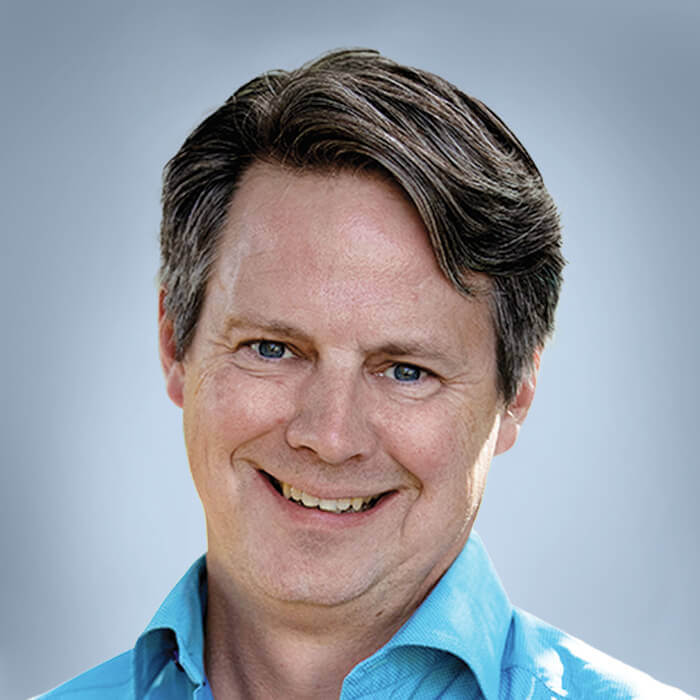In Part 1 of my interview with Laurence Lien, Laurence shares insights from his experience running the Lien Foundation and Asia Philanthropy Circle. We also touch on how philanthropy in the region is responding to global issues, such as the UN Sustainable Development Goals (SDGs). Read Part 1 here.
In Part 2 , Laurence talks about the role of philanthropy in responding to COVID-19, some of the challenges he sees with social entrepreneurship, as well as where he sees philanthropy going in Asia in the coming years.
Q&A with Laurence Lien, CEO of Asia Philanthropy Circle (Part 2)
In recent years, we’ve seen a proliferation of innovative tools and approaches in philanthropy, such as social impact bonds and blended finance. What innovations do you see making an impact in the region?
The younger generation are very keen on ideas of shared value—mixing business and societal benefit—but the deployment of these tools is still very limited in Asia, even in Singapore. It’s a little bit like, you need to walk first before you run—and we aren’t even doing the basics of philanthropy well. I think these tools are fantastic and should be used but there is still a lot more work to be done before you see an impact for deployment of them.
For example: a lot of foundations in Asia are operating foundations, and the reason for that is that the NGO sector is very weak. It is not at all like the U.S., where you have strong NGOs where I can say well if I want to do something I have so many to choose from and I can give a grant to, then I can track what they are doing with it.
In many Asian countries, the trust deficit is so high and the governance standards so low—so how do you develop a social impact bond with NGOs where the governments are corrupt? It is hard, right? I think that governance standards must be much higher, the NGOs also much stronger and much better positioned to be able to implement some of these tools.
In the case of impact investing, the demand for investments is much higher than the supply of opportunities. There are lots of people with good ideas but when you sit down and look at the business plan you throw almost all of them out because they are just not ready, not immediately investable. They need a lot of capacity building—I think they exist, it’s just that we do need to invest philanthropy dollars to build out the capacity of social entrepreneurs. The short answer is, yes, the promise is there but there’s a lot of work to do before we see the fruit of the potential.
I think the interest to be a social entrepreneur tends to be a lot more among the young, people who are just graduating. The problem with this very young group is one: they often lack ambition because they’ve never worked in the outside world—they can’t see what success looks like—and two: you are not sure they could pull it off . You see all these young people who think they are saving the world and you hear their ideas that are not terribly innovative or disruptive and you say well I’m not going to put my money with them.
Young social entrepreneurs need people with a bit more experience. A lot more studies nowadays show successful entrepreneurs are a little older than you might think. They have worked in a context of what a great organization looks like from inside, what it means to run a large organization. They have networks. They have had failures.
As COVID-19 spreads across the globe, how do you see philanthropy responding? What advice would you give to funders looking to help?
It’s still evolving, we don’t know how this will pan out. It moved from China and perhaps Korea to Europe. I think after Europe and U.S. you will see a huge explosion in the developing world. And if you think about what is happening in the U.S. with lack of preparedness and lack of resources, well, think about the developing world. They have it much worse! I think some philanthropists are really concerned about that. They are living in those countries, they will be affected, their employees will be affected.
APC has a call with our members tomorrow on how our members are each individually going to respond and how we can do more. But on the health side we do see increasingly foundations coming in to address the inadequacies in the health care delivery system. So, they are looking at purchasing test kits for the country; PPE is a big thing now, how do you protect health care workers and the front line so they don’t fall sick?
I also think we have to start thinking about the collateral damage and how we can support education, for example: when more than 180 countries have had to close all their schools. In developed countries online learning is still available but in developing countries quite often that’s not an option and you have many children who might drop out permanently, so how do you support them? How do you support distance learning in that context?
When we recover from COVID a lot of people will be so much poorer than before and there will be a lot of pressure on these kids to go to work, the pressure will be much higher, how do you support families so they can support kids going back to school? I think we have to think about the longer term ramifications of this and I think what we have also realized is we have to support our NGOs, many may not survive because they aren’t bringing in revenue now, whether it’s through fundraising or events, activities that have been stopped.
Meanwhile, on the intervention side, the workload increases exponentially because vulnerable groups need help like never before. Whatever government aid that’s given will be helpful, but there will be many who fall through the cracks, so how do we help those NGOs & grantees to help free up unrestricted funds to help serve the beneficiaries?
That’s something we all have to look at.
What do you see as the next frontier for philanthropy in the region? Where is leadership and innovation possible?
I do believe that the frontier is through collaborating on projects that I will call systems change or systems leadership—not just addressing some symptom that doesn’t get to the root cause but tackling something fundamental that requires multi-sector collaboration; not just philanthropists but also the private sector and government. This is much more complex, of course—but if you want to move the needle on SDGs this is the way to go.
For example, we are about to launch the thousand-days fund in Indonesia that tackles stunting in kids under five. One in three kids in Indonesia are stunted which is an alarming number. The work involves an integration of many interventions: taking care of the mother while she is pregnant well before the birth of the child, to the point where the child is born, breast feeding for the first six months, taking care of the child’s nutrition, and things like good water and hygiene practices. You need to integrate all this. One intervention will not work, you need a suite of interventions. On top of that you need to work on behavioral change because it’s not just about the technical knowledge and what you need to do and making things available for people, if people don’t use them then nothing happens, so that’s one big part that a lot of people don’t get right. A lot of it revolves around building capacity and the local government doing this work on a long-term basis.
In Indonesia, the money exists for a lot of these interventions, but they just haven’t reached the last mile. For example, you could have vaccinations or nutritional supplements that are sitting around in warehouses expiring and getting thrown away, but the money is there. So how do you organize this? Addressing all these challenges requires a full systems approach. Once you show that it works, then you will inspire others to copy and really make a difference as opposed to just a little bit here and there which amounts to nothing.


